#character concepts
Text
Random Thoughts around D&D Westerns
Okay. So this started out as me thinking about character concepts for a D&D western-type campaign, and then moved to me thinking about setting elements for a western campaign, and then devolved into me thinking about both westerns and D&D style fantasy as genres, so like … bear with me? I’m trying to figure out how to pull this back and put it in order.
But. Okay. Let’s do it the way I did it. Let’s start from the characters.
So I’ve been noodling around the odd western type character concept for D&D the last little while, things like a druid/light cleric using guiding bolt for high noon style duels (and thorn whip as a lasso), and probably stemming originally from Kossi, my knowledge cleric/fey ranger frontier postwoman character that I’m playing in a solo campaign. So I was thinking about western characters in D&D, and thinking about the archetypes of westerns and how they’d fit.
You have things like the lone wanderer seeking justice or vengeance. The sly gambler with the heart of gold. The fire and brimstone preacher. The fiery homesteader fighting to drive bandits or railway barons off their land. The taciturn bounty hunter more at home in the wilderness than the town. The bewildered easterner about to get a sharp lesson in the way of things out west. The civil war veteran (of either side) trying to make a new life out here where people don’t care who you were, and where the rough and tumble lessons of war won’t look too out of place. The foolish miner lured to his death by greed for gold. The desperado determined to die free, go out in a blaze of glory.
The western, as a genre, is evocative. And, well, of course it is. The western is basically an attempt to valorise and mythologise a particular period of history, to gild over or ignore or straight up heroicise the, uh, less than laudable elements of that era. It’s a mythology, so of course it has some very evocative imagery.
But it is, also, a product/reimagining of a very specific historical and cultural context. And there’s elements of that particular setting that maybe you don’t want to carry over. And others that you do, but they need some set up to build in.
So I started thinking about how to get a western setting, how to make a campaign that would feel like a western. And there are …
See, the thing is, D&D kind is a lot of the way there already? When you think about the kind of stories that show up in westerns, the band of heroes defending a town, or the hunters sent out into the wilderness to track down a dangerous foe. Westerns definitely are one of the progenitor genres for D&D’s whole brand of fantasy to begin with. So what would make a setting feel more deliberately western than just standard D&D?
And, I mean. You have your basic biome shift. Put the story somewhere more arid, like the stereotypical western desert, instead of in a European forest analogue, and already it feels a bit more western. There’s also technology. Firearms, a telegraph analogue, trains. Bring some Eberron elements in, that’ll shift things a bit. But are those just cosmetic changes? Well. Yes but no. Put a pin in that for later. For now, ignoring what a western setting looks like, what does a western setting feel like?
And I think, to a large extent, it comes down to theme. Westerns had a particular set of themes that ran through them, and that’s where the backbone of your setting will come from.
So. Some of the themes I think you see a lot in westerns:
Land Ownership/Land Custodianship/Territory. Westerns are about land, on an extremely intrinsic level. It’s where the colonial underpinnings of the entire genre really show up. Think of all the western books and movies and series you’ve seen that are about claiming land and then defending that claim. So many stories are about being driven off your land. The homesteader under threat from robber barons and cattle barons and railway barons. Towns under threat from ‘Indians’. Miners getting driven off their claims. Who owns what territory. Who has the right to hold what territory. Who can defend their right to that territory. And there is … there’s a cyclical kind of terror in there. A cyclical colonisation. Because the first settlers went out there and took land from the first nations, set up their own towns and ways of life, and then the great civilising forces of the east, the railways and the telegraph wires and the big ranches, rolled in and stole it from them in turn. There’s a kind of a ‘what you do unto others will be done unto you’ sort of terror underpinning a lot of the ethos of the genre. The central theme of a lot of westerns is, basically, the territorial dispute. The land, who owns the land.
Resources/The Lure of Gold. Linked to that, there’s the resources of the land, and who gets to use them, and how far do they get to use them, and who gets murdered in the process. Gold rush. Oil. Lumber. Water. Again, very much linked back to the territorial dispute, but often in a more directly destructive way. Who can not just own the land but destroy the land. How much does owning the land give you the right to use it. And, linked from that, if you own one bit of land, and you destroy it, how does that affect, say, everything downstream of your land? (Mines and mining has a lot of knock on effects).
Civilisation vs Wilderness/Urban vs Rural. Again, linked back, but a lot of the underlying mythology of the Wild West was about being that halfway place, between the full untamed wilderness (or the full ‘savagery’ of the native peoples) and the full civilisation of the big eastern cities. A lot of (particularly later) westerns are about valorising that lost freedom and independence and rough and tumble ‘honesty’, before the railways came through and the cities built up. Which leads to a smaller scale:
Personal Freedom vs Rule of Law. Outlaws. Sheriffs. Bounty Hunters. Gunslingers. The fundamental conflict between a person’s right to do what they think best, exacerbated by so many people feeling like they had to do things for themselves because they were on their own out in the ‘wilderness’, and the need for the civilising, but also potentially tyrannical, forces of law and order. Bringing law and civilisation to the wild frontier. Personal vengeance vs impersonal justice. Corruption. Freedom. Basically, a lot of the conflict in a western will primarily run along the law vs chaos alignment axis. Good and evil depend on your interpretations of the players involved, but the fundament of the conflict will be order vs chaos. And also:
‘Progress’ vs Preservation. The thing about westerns, particularly the ‘golden age’ between the end of the civil war and around about the 1890s, was that they were right in the middle of that 19th century theme of industrialisation. As well as the colonial theme of ‘progressive civilisation vs backwards barbarism’ (hence the inverted commas on ‘progress’). This is a whole bundling together of the above themes, but westerns had a definite theme of encroaching progress. The old way of life being bulldozed for the new. The railroads are coming. Law and order are coming. The old rough and tumble frontier life is dying. The last great gunslinger is about to have his final duel. The famous desperadoes are going out in a blaze of glory. Progress is coming. And it will destroy everything in its path. But will it be a better future? And again, that kind of ties back to the colonial thing. Westerns are weirdly poised where the white settlers are experiencing what they did to those before them.
So. With all of that said. How much of that do we want to emulate? How much of that do we need to emulate? Maybe I don’t want to get into colonialism and land ownership right now, maybe all I want is a setting where a lonesome spellslinger can wander up to a desert town seeking justice, or a rough and tumble party can get together to defend a town from some desperadoes.
But. On a macro geographic level. I do think there’s some elements you want about your setting to set up those kinds of stories.
On a basic level, you want a large region of contested, non-urbanised and non-agriculturalised land (at least in the European sense of ‘endless fields of tillage’), that is divided up into a lot of small territories, where the largest urban areas tend to be towns at best, and large sections of it are claimed by various different groups or even individual owners. This region needs to be bordered by one or several very urbanised and centrally controlled powers. Probably several, not necessarily because you want to directly mirror North vs South or America vs Mexico, but because this region has been the recipient of the leftovers of a lot of outside conflicts. It’s where people come to hide, or reinvent themselves.
And it’s also where people, powers, come to build themselves. So you want to give it resources. Things people want to come and take. The constant theme in westerns is, someone wants your land. Someone wants your gold. Someone wants your town. And why? What do you have that someone wants?
Maybe, since we’re in fantasy western territory, you want to give it a rare, mystical resource. Maybe you can link that up to the theme of progress, too. A particular mineral that allows the manufacture of more powerful, durable spellstones, that would enable someone to set up a network of sending stone stations that would allow news (and information for outside powers) to flow more easily. You know. A telegraph network. Anyway.
So. A large, divided, contested region, not directly occupied by but of interest to several nearby urbanised, civilised powers. An area where there has been a lot of successive waves of people coming in, often from conflicts in or between those surrounding civilised powers. An area with a distinctly fractured and individualistic ethos as a result. An area that maybe always did, because it was never natively inhabited by empire-building societies. Everyone is this land has always claimed their own piece, just big enough for themselves, and been content with that. Yeah, bigger groups wanted more, and wars were had, because people are people, but this idea of ever-expanding ‘progress’ is new and weird and kind of terrifying.
Is this sounding a lot like a typical D&D setting again? Well, I did say D&D has a lot of western in its bones.
So. How do you make it distinct, then? Is it just cosmetic elements, biome shifts and different technology? Give it a more directly desert, 19th century vibe? And, well, that is part of it. But it doesn’t necessarily have to be technology. You don’t have to give everyone a gun. There just has to be a theme of progress. Maybe it is that sending stone network. Maybe you do want to invent a fantasy railway. But you don’t necessarily need gunslingers directly.
As an option for the gun thing, you could give every character, regardless of class, a free ranged attack cantrip. Make it part of the local culture. Defense of home. Every kid in these parts gets taught enough magic to manage that. Shit, hon, everyone teaches their five year olds how to throw a firebolt around here. What if they meet critters out there? Or worse, people?
Mostly, you want to theme your adventures around small, independent towns and groups. You want a lot of the conflict to be over land, over who has the right to be where, over who has the right to take what. You want external regional threats that are attempting to push into the area, often under the guise of for its own good. You want a theme of freedom vs law. You want wilderness vs civilisation. Or ‘wilderness’ vs ‘civilisation’, given how loaded those terms are from a standing start. You want progress as both a promise and a threat. You want natural resources, you want greed, you want boom towns and magical mining and the communities downstream that are paying for it. You want bands of outlaws running from foreign wars and making it everyone else’s problem. You want folk heroes of dubious morality. You want big powers talking about big projects, like driving a new trade route straight through someone else’s territory, like stealing rivers to bring water to cities two hundred miles away, like carving out a whole mountain that doesn’t belong to them to fuel a magical revolution in another city just as far.
And, yeah. Looping back to character concepts and plot elements. Some specific elements and ideas that I might personally include:
An apprentice wizard who’s working as a sending stone operator for the newly established United Sending Corporation station in the local town. It’s the big new thing! You can send messages instantly to any town that has one! Think of how easy it’ll be to get news! It only costs a bit per message. And yeah, the USC high ups are all big city folk from down on the coast, but hey! All the operators are local, and it is a good idea! So why not, huh?
A local druid who’s been seeing strange new afflictions in the plants and animals in their area, and who has come to town to see if anyone else has been having similar issues. And a few people have, mostly along waterways leading back to a particular area of the mountains. Incidentally, there’s also a lot of wagon traffic and provisioners moving through town. Miners and supplies moving out to a big new claim in the mountains …
A wandering itinerant preacher-slash-teacher of a gentle god who, this last little while, has been found themselves moving through towns where another, clearly much more militant preacher has been there ahead of them, and who has been riling up local tensions in ways that they’re beginning to suspect are deliberate. Setting towns on towns, tribes on tribes. Misplaced zeal, or perhaps a more long-reaching attempt to clear a path through the area for something else?
A genteel gambler who’s maintained a careful circuit around some of the local settlements for some time now, taking care not to over-harvest their flock at any one place, has started hearing whispers of a new group of bandits in the area, and some of the whispered names are worryingly familiar, echoes of the good old bad old days, when they were a different person in a different place, and under a different name …
A lean, hard, soft-spoken ranger, who ain’t got no home, who hasn’t had a home in forty years, who gets paid good money to track people down and bring ‘em in, and who has been wondering, after these last couple jobs, just who exactly has been setting the bounties in this area. Because there’s starting to be a pattern in their targets, and they’re starting not to like it.
A tired fighter, not even forty years old and already grizzled, with an albatross around their neck in the form of a legend. A bright young child who watched everything they loved be destroyed, home burned, family killed, and land stolen, and who became the fastest, meanest, most dangerous spellsword in the land in response. But that was thirty fucking years ago, and vengeance can only sustain you for so long, and now they’re broke down and broke up, and so fucking tired of all these young idiots trying to make a name for themselves out of their hide.
A charming, vicious sorcerer with a very visible scar who tends to respond dramatically to threats, and who takes a certain amount of perverse pride in being the ‘bad element’ in any town they wind up in, but who maybe, if it was offered, wouldn’t say no to chance to be better regarded than that. At least in one place. At least by one person.
Because, you know, as tangled and thorny as the genre is, westerns do have some really fucking iconic archetypes, and they are fun. Throw magic on top of it, and it is a vibe. I do enjoy it. Just, you know. You’ve got to set it up a bit carefully around the implications. Heh.
#d&d#fantasy#westerns#weird westerns#themes of the genre#character concepts#setting concepts#rambling
15 notes
·
View notes
Text

Artwork by: Tomasz Ryger
210 notes
·
View notes
Text





Design Evolution of the Woodsman - "Art of Over The Garden Wall"
#the woodsman#otgw the woodsman#otgw woodsman#the woodsman otgw#the woodsman over the garden wall#woodsman otgw#over the garden wall#otgw#otgw art#over the garden wall art#art appreciation#character concept#character concepts#character design#concept art#animation#animators#2d#pencil art#character art#traditional art#character sheet#pencil sketch#cool art#2d illustration#illustrations#traditional illustration
171 notes
·
View notes
Text
Oh by the way!! This is how I figured out how to make Wendy consistent -w-
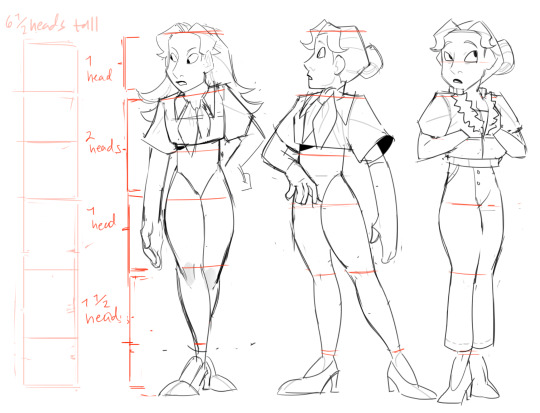



I like pretending Im making a show hehe
222 notes
·
View notes
Text
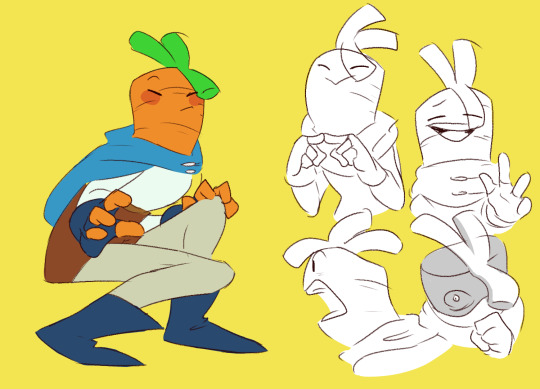

Have some board practice for a project I've been part of that's for funsies with friends, I'm probably not going to continue anything with this board or characters but heck if it wasn't fun
127 notes
·
View notes
Text
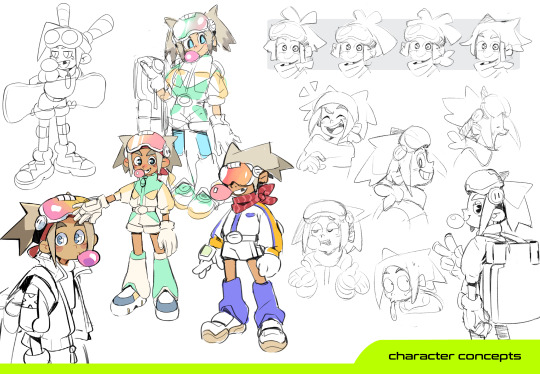


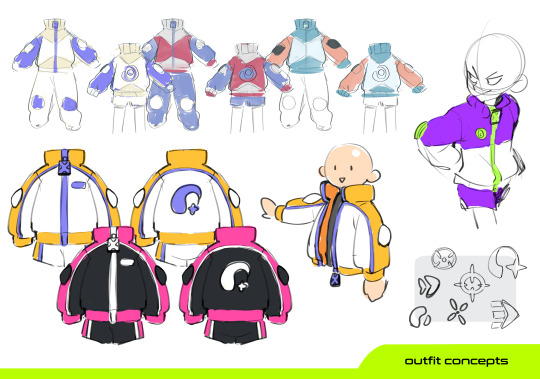
Some concepts from my XFIRE DASH! project :)
❎XFIRE DASH! TAG
292 notes
·
View notes
Text

My absolute FAVORITE brand of a character/Story. Absolutely delicious when written well 👌👌👌
#sorry mutuals who are seeing me obsess over a bunch of random things and making/Re logging that only favor to me </3#meme#character concepts#writing concepts#story tropes#character tropes#writing tropes#writing memes#story memes#I have so many ocs that fall under BOTH of these themes#just the angst that come with both and the unique ways you can play it out amongst characters#UGH I LOVE IT <333
126 notes
·
View notes
Text

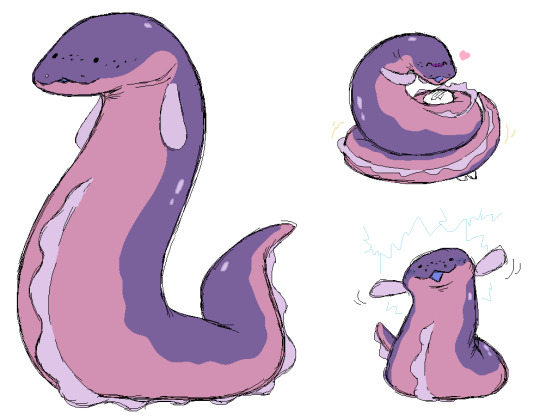
I said ooh girl
371 notes
·
View notes
Text

Jaro without hat. For stuff.
32 notes
·
View notes
Text

Made this a while ago for PATREON just as a quick experiment of what Johns soul would look like in the In-Between, to kinda go with Caro’s (I’ve posted art of Caro’s soul before and ofc if you have read part one of Mil-Liminal you know this already!) johns version doesn’t have to make a lot of sense, someday it will, and ofc I love theories! idk if this art is canon yet, but in my stories your soul self carries the important elements of your living self. So I thought to myself, ‘self, what would soul John look like?’
Also I just wanted to draw angst layered on a thirst trap. C:
85 notes
·
View notes
Text
Finally got around to drawing Logan! The Wolfpack is complete... For now lol! Almost done with the sequel to Claws Like Mine! So happy 😭😭



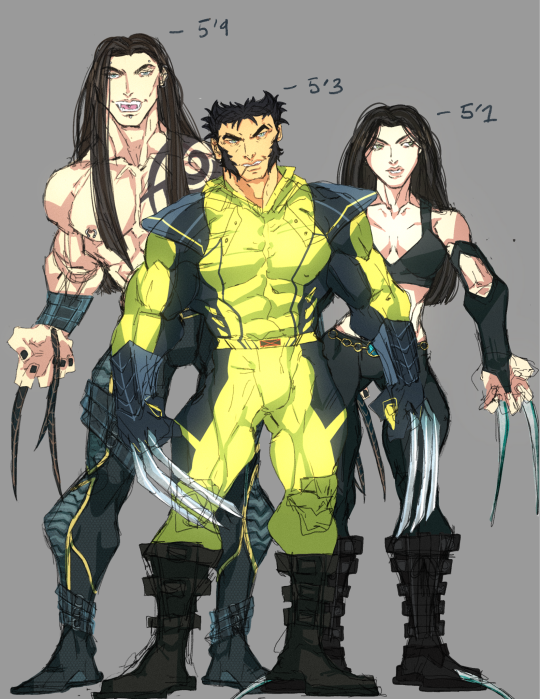
#logan howlett#james howlett#wolverine#xmen fanart#xmen#xmen the animated series#xmen 97#sabretooth fanart#sabretooth#daken akihiro#x 23#laura kinney#romulus#marvel comic fanart#marvel fanart#character concepts#concept ideas#concept art#anime illustration#anime artist#sketch#drawing#marvel comics
27 notes
·
View notes
Text
D&D Character Concept: The Druid in the Walls
You know when weird bits of inspiration combine from very disparate sources? Specifically to give you extremely horrible backstories for a character?
Because I’ve been walking the dog the last while, and I’ve been noticing a lot of the wall plants. You know, the bits of plants, pennywort and red robin and the like, that grow in the cracks in the walls? Between the stones, in the gaps in the plaster. They’re really pretty, and I just love the stubbornness of them, to wind their way into wherever they can anchor and just bloom there.
I’ve written some things before on urban druids in D&D, and I was thinking idly about making a character in that context. The plants that grow in the cracks in the walls. And, because this is D&D and tragic backstories are, like, the thing, I was considering …
Beyond just general urban misery, where would you be where the sight of a stubborn little weed growing in the crack in a wall might be the one beautiful thing you can see and a seed that becomes a focus for your whole being?
Prison is an obvious answer. A cell, looking up at the bit of green growing near a high window. But the idea merged with a crime documentary I watched on youtube, which I cannot find again, about (warning for child death) a Victorian/Early 20th century murder of a child. A society woman who’d had a child out of wedlock as a teenager collected her young daughter from the woman who’d been caring for her, brought her to the cellar of her new husband’s house, and murdered her, without realising that one of the maids witnessed the deed. Which, yes, extraordinarily dark. But.
A child in the cellar. An illegitimate child, hidden away. A bit of green in a high window.
For some reason, my first thought was half elf, because D&D has some options for visibly illegitimate children. But then I remembered we can go one further for social ramifications. We could have a tiefling. A tiefling druid, who spent her first years in the care of a nurse, until she was old enough that they knew she would survive, and then was violently taken away and hidden. Because she is living proof of a … of an indiscretion. A sin.
There’s a bit of me that wants to go with the Sword Coast Adventurer’s Guide tiefling variants as well, here. Because, while we’re on this very bleak trip into victorianesque worries about the physical markers of illegitimacy and immorality, there’s the alternate appearance descriptions for variant tieflings: “Your tiefling might not look like other tieflings. Rather than having the physical characteristics described in the Player's Handbook, choose 1d4+1 of the following features: small horns; fangs or sharp teeth; a forked tongue; catlike eyes; six fingers on each hand; goatlike legs; cloven hoofs; a forked tail; leathery or scaly skin; red or dark blue skin; cast no shadow or reflection; exude a smell of brimstone.”
… Tieflings really are playing on a lot of … of very old fears and prejudices. So yeah. But if we’re consciously playing with that, here. It does work.
And this is the sort of house that has a cellar. That has maids. That has nurses. This is urban nobility. But this kid has no memory of wealth, comfort. She just remembers a prison. A cold room with a high window onto street level. And the bit of green, the delicate bloom, the one pretty thing she can remember, shining in the dusty light of that window.
I also, I’ve been handwashing a lot of clothes lately, and I was thinking about the red hands you get from hand laundry. Caught red-handed. And, urban nobility like that, they’d have laundry. Maybe even laundry in the cellar. And I was thinking about the maid in that documentary. And I was thinking … someone freed them. Someone heard the creature in the walls of that house, and the hints upstairs of what it might be, and someone found the compassion in their hearts to do something. Some tiny thing. Even if it was just ‘accidentally’ leaving a door open. And all this kid remembers of how she got out of that prison is … red hands. The raw, boiled red hands of a laundry woman, as she darted past them into the light, in search of their tiny sprout of green.
So she escaped. She lived as a street urchin for a while, a good few years. And she never lost … She looks for the plants. The weeds. The tiny scraps of green the city over. The flowers blooming in the cracks in the walls. Because there’s … there’s an ethos there. A sympathy. A stubborn, determined thing. They grow where they’re not wanted, in the dirt and in the dark, and they bloom anyway. They survive, and they bloom, and they give hope to those around them. It’s a scrap of a thing, a fragile shred of green, but it grows. No matter how unwanted it is. And it gives hope when there’s nothing else.
At some point another druid stumbled across her. An apothecary, maybe, an urban herbalist, or just a vagabond with their own sympathy and appreciation for those shreds of green that all the artifice of urban living could not drive away. She found a teacher. She learned some things. And she gave back some things. Druids have goodberry. Healing word. Spells to help … those who survive in the city’s cracks and crevices. And she wants to. Because of the green, yes, for the hope in the darkness, and also for those boiled red hands. For the servant who helped her, for the faceless person in her memory, that pair of hands, that helped the monster in the walls when no one else would. She doesn’t know who she was. She don’t know what happened to her. The house she came from had a demonic child caged within it. Who knows what they’d do to a servant who interfered in the family business like that? Urban elite, nobility, tend to have … pragmatic solutions to things like that.
Though they hadn’t killed her. Why didn’t they just kill the monstrous child, the proof of their sins? Why hide her, instead of simply getting rid of her? So maybe … maybe there’s hope. Maybe that poor woman, whoever she was, didn’t die for her good deed. I think that is a hope she holds. That she wants to find out what happened to that woman, and maybe, if it’s possible, if it’s not so very much too much to hope, to meet her. Thank her. And … until then. To emulate her. To help. Before anything else, just to help.
I do know I want this druid to have the druidcraft cantrip. Because, yes, it might be largely useless, compared to the likes of prestidigitation and even thaumaturgy. And yes, druids only start with two cantrips, and she probably should take more useful ones. But there is one effect of druidcraft: “You instantly make a flower blossom, a seed pod open, or a leaf bud bloom.” And that’s …
I’m not sure if it’d be ruled that she could create flowers with that. Let small flowers bloom in the cracks with a whisper. But even if she’s only helping the ones already there to bloom, it’s still …
That was her hope. Her symbol of the outside world. The only beautiful thing in her world for years. And she wants to be able to spread that. That was the first magic she learned. The first warmth and hope she ever held in her hands. The ability to make flowers bloom. Even here. Even in the dirt and the dust and the misery. A little tendril of green, stubbornly rooted into the stones of the world. Sometimes you don’t need to be able to fight. Sometimes you just need to be able to provide hope.
(If she could also get herself a Staff of Flowers along the way, she’d love that too)
Maybe a lot of the local urchins know to follow the flowers to find help. You know?
So yeah. Yeah. A tiefling urchin urban druid. A child of sin, with the cherished power to coax hope to bloom, and the stubborn determination to grow no matter what. And to … to repay the small and infinitely precious kindnesses they have received.
#d&d#5e#character concepts#druids#urban druids#tieflings#illegitimacy#druidcraft#urban plants#dark backstories#hope in the flowers
38 notes
·
View notes
Text

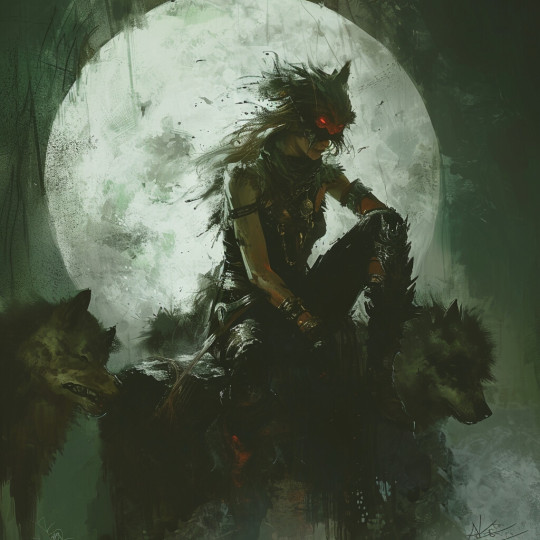
Artwork by: Anton Mauve | Jeremy Mann
#World of Darkness#Vampire the Masquerade#Vampire#Gangrel#Sheriff#Camarilla#Independent#Werewolf the Apocalypse#Werewolf#Wolves#Character Concepts#Scene Ideas
88 notes
·
View notes
Text



Some coven head designs for witch switch
#happy witch switch sunday i actually finished something#toh#the owl house#witch switch au#my art#amity blight#willow park#character concepts
51 notes
·
View notes
Text

Some Little Guy concepts for another idea - a little guy who goes out into the woods and gets little presents for their adoptive dad
101 notes
·
View notes
Text

Kinda an ootd/throwback to an outfit I wore to a Velvet Goldmine screening recently!
74 notes
·
View notes